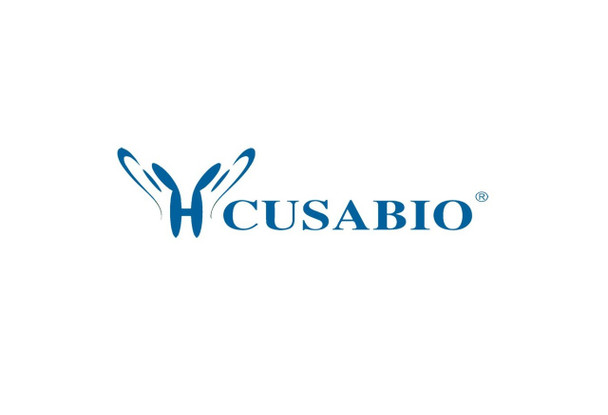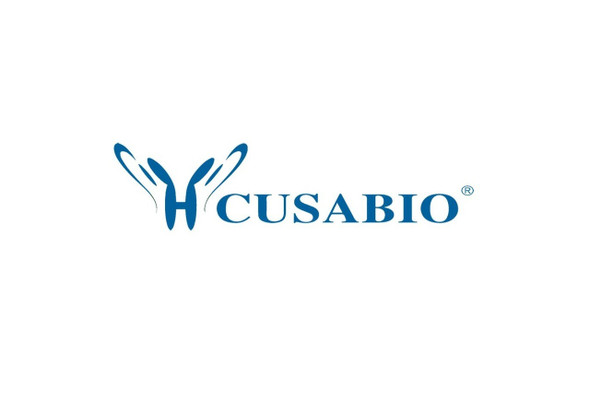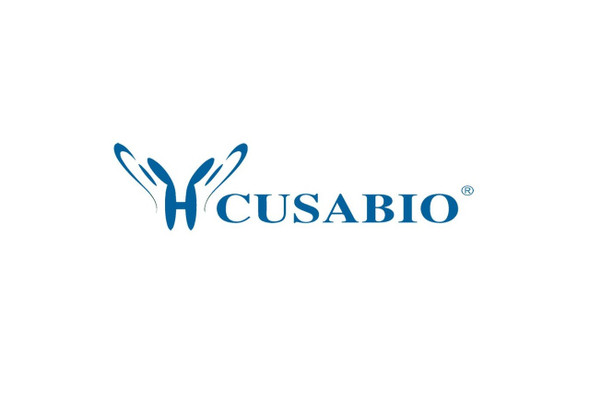Cusabio Human Recombinants
Recombinant Human Collagen alpha-1 (XVII) chain (COL17A1), partial | CSB-EP891970HU
- SKU:
- CSB-EP891970HU
- Availability:
- 3 - 7 Working Days
Description
Recombinant Human Collagen alpha-1 (XVII) chain (COL17A1), partial | CSB-EP891970HU | Cusabio
Alternative Name(s): 180KDA bullous pemphigoid antigen 2Bullous pemphigoid antigen 2
Gene Names: COL17A1
Research Areas: Signal Transduction
Organism: Homo sapiens (Human)
AA Sequence: YLTSPDVRSFIVGPPGPPGPQGPPGDSRLLSTDASHSRGSSSSSHSSSVRRGSSYSSSMSTGGGGAGSLGAGGAFGEAAGDRGPYGTDIGPGGGYGAAAEGGMYAGNGGLLGADFAGDLDYNELAVRVSESMQRQGLLQGMAYTVQGPPGQPGPQGPPGISKVFSAYSNVTADLMDFFQTYGAIQGPPGQKGEMGTPGPKGDRGPAGPPGHPGPPGPRGHKGEKGDKGDQVYAGRRRRRSIAVKP
Source: E.coli
Tag Info: N-terminal 6xHis-tagged
Expression Region: 1253-1497aa
Sequence Info: Partial
MW: 28.4 kDa
Purity: Greater than 90% as determined by SDS-PAGE.
Relevance: May play a role in the integrity of hidesmosome and the attachment of basal keratinocytes to the underlying basent mbrane.The 120KDA linear IgA disease antigen is an anchoring filament component involved in dermal-epidermal cohesion. Is the target of linear IgA bullous dermatosis autoantibodies.
Reference: The DNA sequence and comparative analysis of human chromosome 10.Deloukas P., Earthrowl M.E., Grafham D.V., Rubenfield M., French L., Steward C.A., Sims S.K., Jones M.C., Searle S., Scott C., Howe K., Hunt S.E., Andrews T.D., Gilbert J.G.R., Swarbreck D., Ashurst J.L., Taylor A., Battles J. , Bird C.P., Ainscough R., Almeida J.P., Ashwell R.I.S., Ambrose K.D., Babbage A.K., Bagguley C.L., Bailey J., Banerjee R., Bates K., Beasley H., Bray-Allen S., Brown A.J., Brown J.Y., Burford D.C., Burrill W., Burton J., Cahill P., Camire D., Carter N.P., Chapman J.C., Clark S.Y., Clarke G., Clee C.M., Clegg S., Corby N., Coulson A., Dhami P., Dutta I., Dunn M., Faulkner L., Frankish A., Frankland J.A., Garner P., Garnett J., Gribble S., Griffiths C., Grocock R., Gustafson E., Hammond S., Harley J.L., Hart E., Heath P.D., Ho T.P., Hopkins B., Horne J., Howden P.J., Huckle E., Hynds C., Johnson C., Johnson D., Kana A., Kay M., Kimberley A.M., Kershaw J.K., Kokkinaki M., Laird G.K., Lawlor S., Lee H.M., Leongamornlert D.A., Laird G., Lloyd C., Lloyd D.M., Loveland J., Lovell J., McLaren S., McLay K.E., McMurray A., Mashreghi-Mohammadi M., Matthews L., Milne S., Nickerson T., Nguyen M., Overton-Larty E., Palmer S.A., Pearce A.V., Peck A.I., Pelan S., Phillimore B., Porter K., Rice C.M., Rogosin A., Ross M.T., Sarafidou T., Sehra H.K., Shownkeen R., Skuce C.D., Smith M., Standring L., Sycamore N., Tester J., Thorpe A., Torcasso W., Tracey A., Tromans A., Tsolas J., Wall M., Walsh J., Wang H., Weinstock K., West A.P., Willey D.L., Whitehead S.L., Wilming L., Wray P.W., Young L., Chen Y., Lovering R.C., Moschonas N.K., Siebert R., Fechtel K., Bentley D., Durbin R.M., Hubbard T., Doucette-Stamm L., Beck S., Smith D.R., Rogers J.Nature 429:375-381(2004)
Storage: The shelf life is related to many factors, storage state, buffer ingredients, storage temperature and the stability of the protein itself. Generally, the shelf life of liquid form is 6 months at -20?/-80?. The shelf life of lyophilized form is 12 months at -20?/-80?.
Notes: Repeated freezing and thawing is not recommended. Store working aliquots at 4? for up to one week.
Function: May play a role in the integrity of hemidesmosome and the attachment of basal keratinocytes to the underlying basement membrane.; FUNCTION
Involvement in disease: Generalized atrophic benign epidermolysis bullosa (GABEB); Epithelial recurrent erosion dystrophy (ERED)
Subcellular Location: Cell junction, hemidesmosome, Membrane, Single-pass type II membrane protein, Note=Localized along the plasma membrane of the hemidesmosome, SUBCELLULAR LOCATION: 120 kDa linear IgA disease antigen: Secreted, extracellular space, extracellular matrix, basement membrane, Note=Exclusively localized to anchoring filaments, Localized to the epidermal side of split skin, SUBCELLULAR LOCATION: 97 kDa linear IgA disease antigen: Secreted, extracellular space, extracellular matrix, basement membrane
Protein Families:
Tissue Specificity: Detected in skin (PubMed:8618013). In the cornea, it is detected in the epithelial basement membrane, the epithelial cells, and at a lower level in stromal cells (at protein level) (PubMed:25676728). Stratified squamous epithelia. Found in hemidesmosomes. Expressed in cornea, oral mucosa, esophagus, intestine, kidney collecting ducts, ureter, bladder, urethra and thymus but is absent in lung, blood vessels, skeletal muscle and nerves.
Paythway:
Form: Liquid or Lyophilized powder
Buffer: If the delivery form is liquid, the default storage buffer is Tris/PBS-based buffer, 5%-50% glycerol. If the delivery form is lyophilized powder, the buffer before lyophilization is Tris/PBS-based buffer, 6% Trehalose, pH 8.0.
Reconstitution: We recommend that this vial be briefly centrifuged prior to opening to bring the contents to the bottom. Please reconstitute protein in deionized sterile water to a concentration of 0.1-1.0 mg/mL.We recommend to add 5-50% of glycerol (final concentration) and aliquot for long-term storage at -20?/-80?. Our default final concentration of glycerol is 50%. Customers could use it as reference.
Uniprot ID: Q9UMD9
HGNC Database Link: HGNC
UniGene Database Link: UniGene
KEGG Database Link: KEGG
STRING Database Link: STRING
OMIM Database Link: OMIM


-SDS__27727.1638526414.jpg?c=1)

-SDS__27727.1638526414.jpg?c=1)




